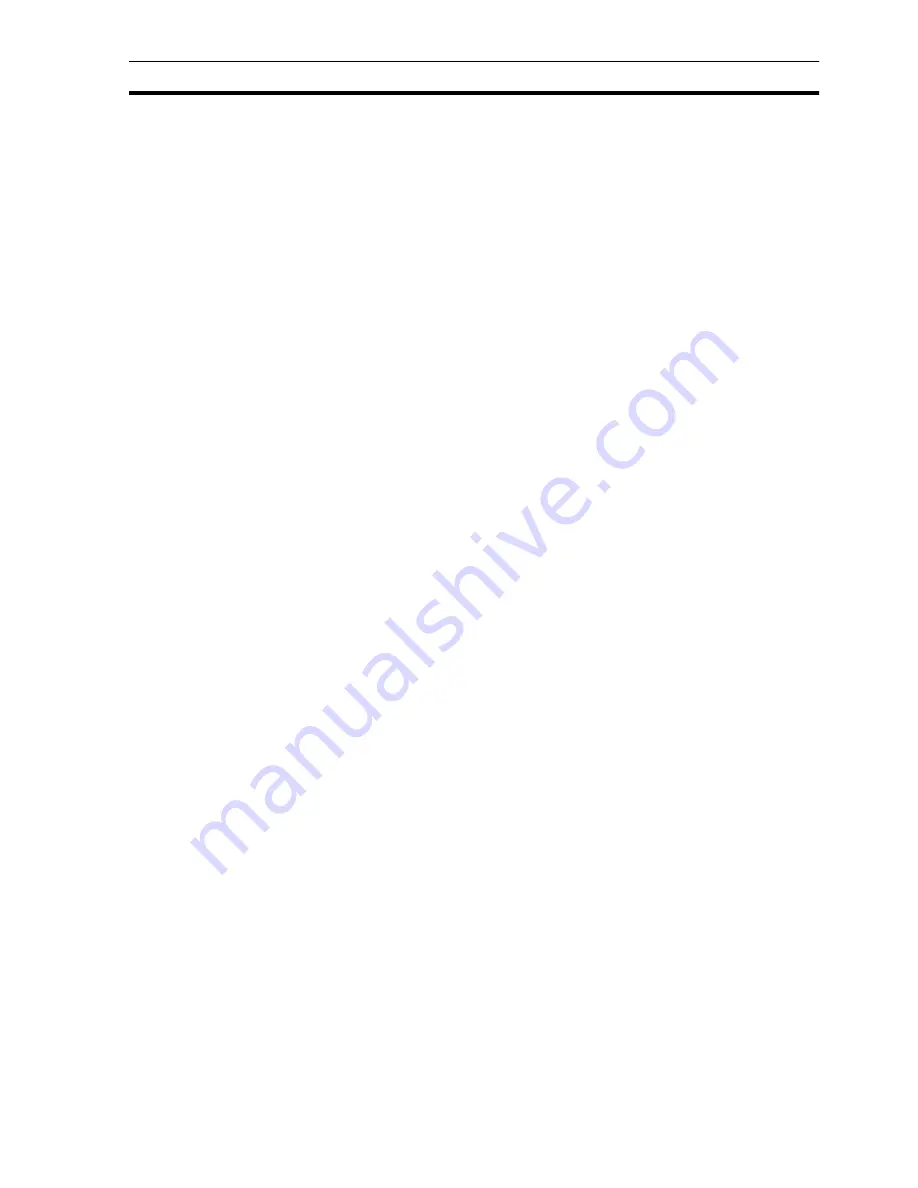
Settings
SECTION 6 Projects
91
•
To select items in a specific tab order: use the <Tab> key to move around
the page items in a specific order, using the 'move to top' feature. Start at
object number 1 and end with the last object, i.e. if obj1, obj2 and obj3 then
use 'move to top' on obj1 first, followed by obj2 and then by obj3; this gives
the tab order obj1, obj2, obj3.
•
Changing Between Pages. The <Ctrl>+<Tab> key can be used to change
between pages.
•
Simulating a Left Mouse Button Click. Objects that have scripts attached
(such as a button) or objects that perform a particular action when clicked
(such as toggle buttons) can be executed by using the <Enter> key.
•
Slider Operation. When a slider object is selected, the plus (+) and minus
(-) keys can be used to increment or decrement its value respectively. This
also applies to the sliders on trend graphs.
•
Obtaining the Runtime Floating Menu. To display the Runtime Floating
menu, use either the <Shift>+<F10> key combination or use the Windows
right mouse button key, which is next to the <Ctrl> key on the right hand
side of the keyboard.
•
Standard Windows Keys. Some standard Windows key combinations are
as follows:
<Alt>+<-> (hyphen)
Used to access the child window control box at the top left hand side
of the dialog box.
<Alt>+<Spacebar>
Used to access the main window control box at the top left hand side
of the dialog box.
<Alt>+<F4>
Used to close down the current application.
•
Using Runtime Alarm, Error and Recipe Viewer. These can be invoked
from the Runtime Floating menu (see above). To access their functionality
use the <Tab> key to move from button to button, and <Enter> to press a
button. The up and down cursor keys can be used to scroll the displayed
list. To close them (or to move or resize them) use the standard <Alt>+<-
> (hyphen) key combination to access their menus.
•
Other Notes. In Project level scripts, it is possible to define 'OnKeyPress'
scripts, which are attached to the cursor keys. If Keyboard Only operation
is set, then it is not possible to execute a script attached to one of the
cursor keys, since they are being used for navigating around the
selectable objects on the page. Alternative additional keys have been
added to compensate for this. They are the number pad cursor keys (i.e.
2, 4, 6, and 8). However, these can only be used when the <Num Lock>
key is on.
6-10-2-2 Target Settings
The project target can be changed between Machine Edition and PLUS with
this dialog box:
Содержание CX-Supervisor
Страница 1: ...CX Supervisor Software Cat No W10E EN 01 User Manual Software Release 3 1...
Страница 3: ...Copyright Notice 2...
Страница 16: ...15...
Страница 17: ...16...
Страница 27: ...Tip of the Day SECTION 1 Graphics Editor 26...
Страница 35: ...CX Supervisor Preferences SECTION 2 Pages 34...
Страница 79: ...Responding to Events SECTION 5 ActiveX Objects 78...
Страница 115: ...Printing the Graphics Library SECTION 7 Graphics Library 114...
Страница 181: ...Data Logging SECTION 11 Data Logging 180...
Страница 201: ...Examples SECTION 12 Databases 200...
Страница 243: ...Performance Monitor SECTION 16 Application Analysis Performance Monitor 242...
Страница 253: ...Using with Omron s CX Server OPC SECTION 17 Using CX Supervisor as an OPC Cli 252...
Страница 259: ...Creating a CX Supervisor Client application SECTION 18 Connecting to a remote CX 258...
Страница 263: ...Adding a Point Linked to a Parameter SECTION 19 Connecting to Omron Industrial 262...
Страница 271: ...Data Logging SECTION 20 Best Practices 270...
Страница 275: ...Configuring a Server PC running Windows NT or 2000 Appendix A Configuring a PC 274...
Страница 277: ...Appendix B Frequently Asked Questions 276...
Страница 296: ...Appendix B Frequently Asked Questions 295...
Страница 297: ...Appendix B Frequently Asked Questions 296...
Страница 298: ...Appendix B Frequently Asked Questions 297...
Страница 299: ...Appendix B Frequently Asked Questions 298...
Страница 333: ...Revision history 332...






























